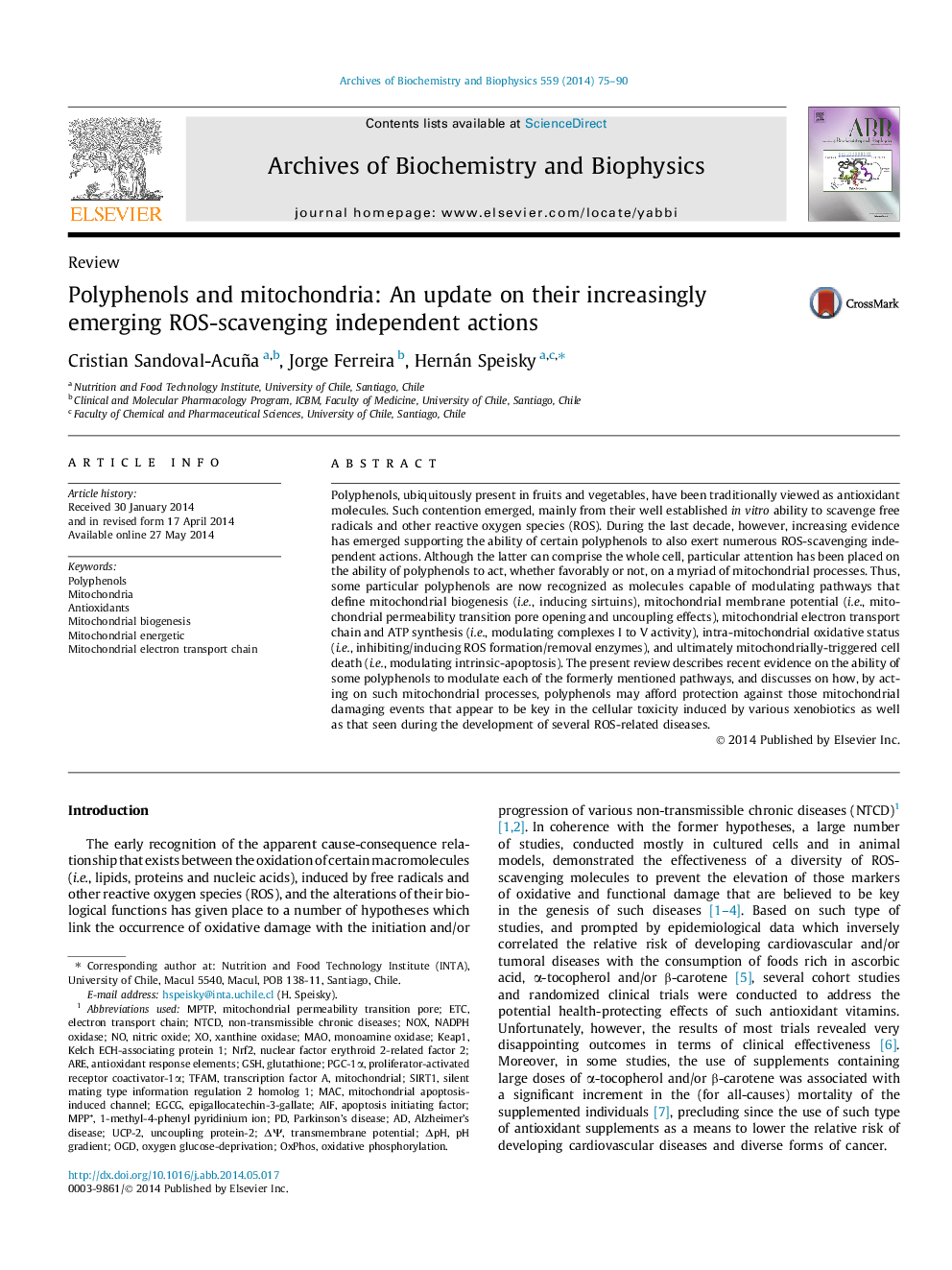| Article ID | Journal | Published Year | Pages | File Type |
|---|---|---|---|---|
| 1925133 | Archives of Biochemistry and Biophysics | 2014 | 16 Pages |
•All natural polyphenols exhibit ROS-scavenging properties.•Some polyphenols affect mitochondria through ROS-scavenging independent mechanisms.•Particular polyphenols modulate mitochondrial biogenesis and/or intrinsic apoptosis.•Certain polyphenols affect mitochondrial electron transport chain and ATP synthesis.•Selected polyphenols uncouple oxidative phosphorylation and modulate MPTP opening.
Polyphenols, ubiquitously present in fruits and vegetables, have been traditionally viewed as antioxidant molecules. Such contention emerged, mainly from their well established in vitro ability to scavenge free radicals and other reactive oxygen species (ROS). During the last decade, however, increasing evidence has emerged supporting the ability of certain polyphenols to also exert numerous ROS-scavenging independent actions. Although the latter can comprise the whole cell, particular attention has been placed on the ability of polyphenols to act, whether favorably or not, on a myriad of mitochondrial processes. Thus, some particular polyphenols are now recognized as molecules capable of modulating pathways that define mitochondrial biogenesis (i.e., inducing sirtuins), mitochondrial membrane potential (i.e., mitochondrial permeability transition pore opening and uncoupling effects), mitochondrial electron transport chain and ATP synthesis (i.e., modulating complexes I to V activity), intra-mitochondrial oxidative status (i.e., inhibiting/inducing ROS formation/removal enzymes), and ultimately mitochondrially-triggered cell death (i.e., modulating intrinsic-apoptosis). The present review describes recent evidence on the ability of some polyphenols to modulate each of the formerly mentioned pathways, and discusses on how, by acting on such mitochondrial processes, polyphenols may afford protection against those mitochondrial damaging events that appear to be key in the cellular toxicity induced by various xenobiotics as well as that seen during the development of several ROS-related diseases.
